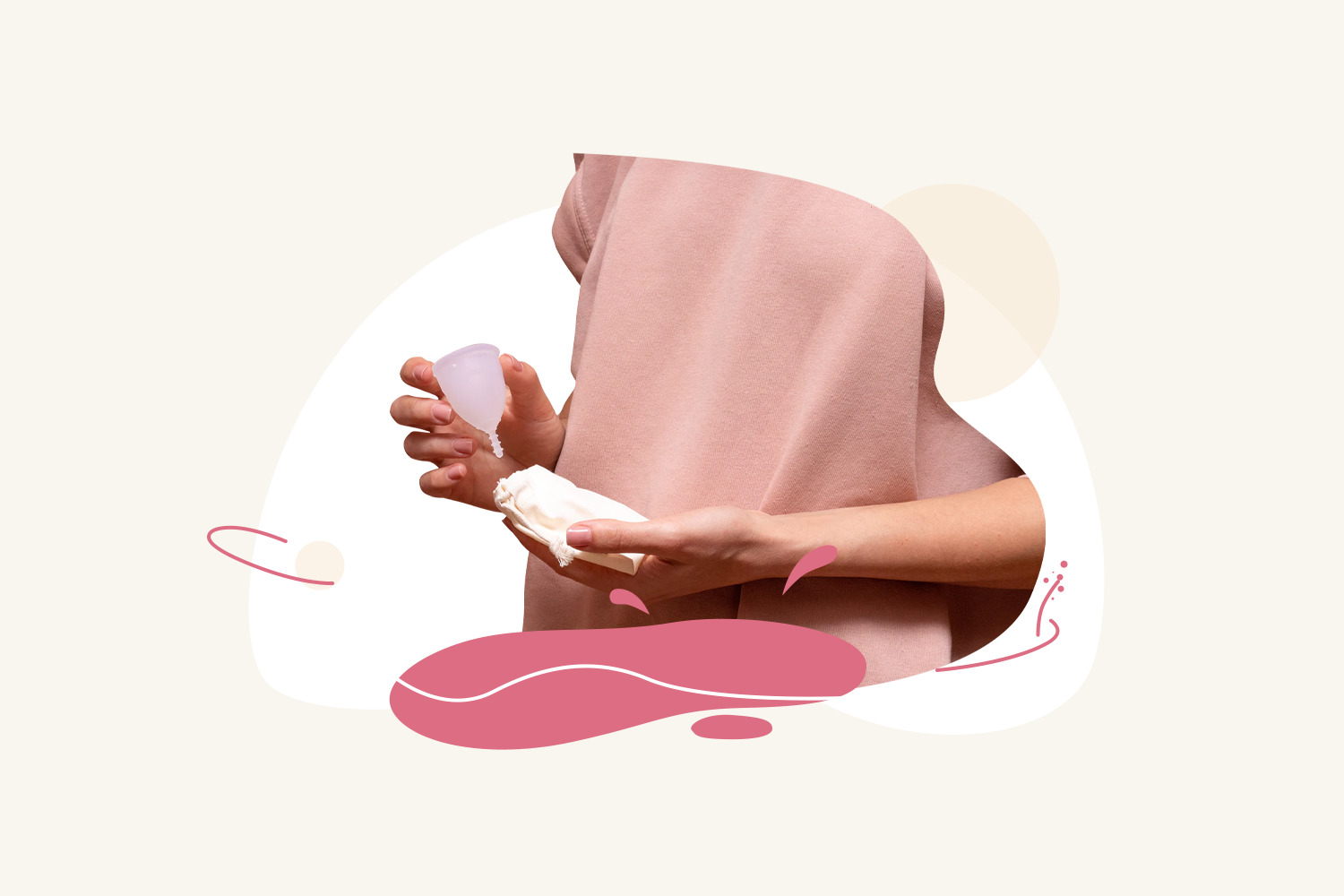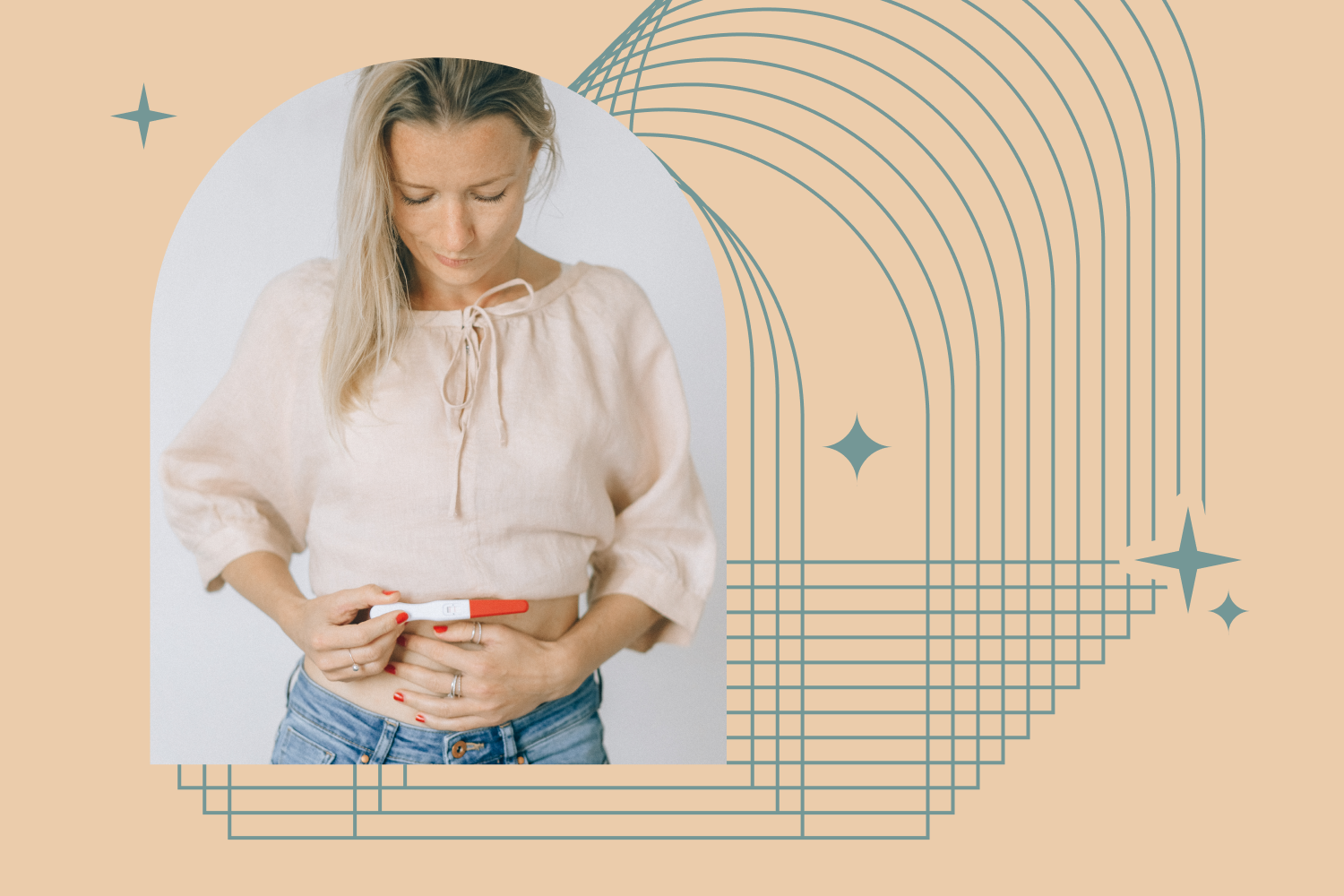How to Insert and Remove a Menstrual Cup Like a Pro
We’re writing this post in 2021 and it’s highly unlikely you’re just now learning about menstrual cups. Whether you’re new to the world of period cups or considering switching from your tampon or pad, one of the biggest (and most intimidating) questions is how to insert and remove the menstrual cup effectively.

In this post we will look at how the cup works, how to ensure it stays clean, and which insertion method might work best for you.
What is a menstrual cup?
A menstrual cup is a type of reusable feminine hygiene product, inserted into the vagina, to collect menstrual fluid. Usually made out of silicone or rubber, menstrual cups are small, flexible, and funnel-shaped to collect and catch period fluid. Not only are they reusable, but menstrual cups can also hold more blood than traditional products like tampons, meaning they can be worn for longer.
How does it work?
A menstrual cup works by catching and collecting your period blood in a small rubber cup rather than absorbing it like a tampon or pad. Shaped like a bell with a stem, the cup is inserted into the vagina much like a tampon without an applicator. Once inserted, the cup opens to rest against the walls of the vagina creating a leak proof seal to let blood drip into the cup.

Because they can hold more than other methods, cups require less changing and can be worn for up to 12 hours (depending on flow) before they need to be removed and washed.
How do you insert a menstrual cup?
Don’t be intimidated by a little piece of rubber! With some practice, inserting a menstrual cup can be an easy, safe, and environmentally-friendly way to collect menstrual fluid (even if you have an IUD). Correctly inserting a menstrual cup can be achieved by following these simple guidelines.
Clean and disinfect before use
When using your menstrual cup for the first time, and at the end of every cycle, it’s important to disinfect it. Sanitizing your menstrual cup completely removes any harmful bacteria to prevent bacterial growth before the next use. This is usually done by bringing a pot of water to a boil, dropping the cup in, and letting it sit for at least 5 minutes while not letting the cup rest on the bottom of the pot.
During regular period use, a simple cleaning with mild soap and warm water for both the cup and your hands will suffice. Make sure to wash your hands thoroughly with warm water and a mild soap before inserting a clean and disinfected cup.
Find a comfortable position
Inserting a menstrual cup for the first time is as simple as finding the position that works for you, even if you’ve never used a tampon.
Whether that is sitting on the toilet, in a standing position, or while crouching, find the position that is most comfortable for you. Keep in mind that your vagina likely slants towards your back, so slide the cup ‘in and back’ at an angle for the smoothest insertion.
Pick your favourite folding technique
To make insertion comfortable and effective, you will need to fold the menstrual cup to put it into the vagina and create the seal. Using a fold shrinks the cup’s opening to make it easier to insert and we recommend choosing a method from the following list that works best for you.
-
C-fold (U-fold)
A quick and easy fold that you can do one-handed, the C-fold is one of the most popular folds recommended for menstrual cups, especially for beginners. This fold works by folding the cup in on itself to make it flat, then in half to form a C or U shape.
-
S-fold
Particularly good for larger cups, the S fold is achieved by folding the cup flat and pushing the edges together to make a zigzag or S shape. Not as common as other folds, the S-fold can be a bit tricky at first, but with practice it’s easy to learn.
-
7 fold
Also known as the Triangle Fold, the 7 fold technique is a favourite among younger women and those with difficulty inserting their cup. This fold makes a smaller insertion area, and releases easily once inside of you. The 7 fold can be achieved by flattening the cup and then taking one corner and folding it down (either halfway down the cup or right near the stem) to make a 7 shape.
-
Pushdown fold
One of the most popular folds, and also the easiest, the pushdown fold creates one of the smallest areas of insertion for your menstrual cup. This easy fold can be achieved by pushing the rim of the cup down inside the base and squeezing the edges together before inserting.
Make sure your cup is not leaking
To avoid leakage, it’s important to make sure your cup is fit and inserted properly. To prevent leakage, your cup needs to be fully opened and sealed against the vaginal walls. Always check after insertion to make sure the cup is completely unfolded and a proper seal has been achieved.
You can either turn the cup around completely or run your finger along the edge to ensure a tight seal. It may take some trial and error, but most cup users get the hang of things within a few cycles. You may want to have a backup such as panty liners or period underwear until you are sure.
How do I know if my menstrual cup is inserted properly?
You’ll know your menstrual cup is inserted properly when your cup can’t be felt, stays in one place, and doesn’t leak. Once the cup has unfolded inside you, and created the necessary suction seal, it is inserted correctly. If you’re unsure, you can try pulling the stem a bit – resistance means the seal has been created and the cup has been inserted properly. If you are still having issues, you may want to check the sizing.
Let’s repeat all the steps one more time:

How long can you wear a menstrual cup?
Menstrual cups are generally regarded as safe within the medical community, and their risks are minimal. Because they are designed to hold up to 1 ounce of liquid, almost double what a super absorbent tampon or pad can hold, menstrual cups can be worn for up to 12 hours. Due to the nature and materials of the cup, collecting your flow rather than absorbing it, menstrual cups can be safely worn for much longer than traditional period products.
How do you remove a menstrual cup?
Like insertion, removing a menstrual cup is easy with just a few simple steps. Always start by washing your hands thoroughly before removal and never pull down on the stem or try and tug the cup out.
Menstrual cups work based on the seal of the cup, and that seal will need to be broken before removal. Find a comfortable position sitting or standing and use your pelvic muscles to push the cup down and out. In most cases, this motion will break the seal and you can use your fingers to gently pull down the menstrual cup.
You can also squeeze the bottom of the cup to break the seal if the first method doesn’t work. Carefully pull the cup out, and tip the contents into the toilet. It may take some trial and error before you’re fully confident in removing your menstrual cup.
Whether you’ve chosen to use a menstrual cup for environmental reasons, the reduced cost, or perhaps just convenience, it can take a certain amount of trial and error before you are up and running. Don’t let that deter you from using this game changer in the period world!
How can a menstrual cup help you get pregnant?
A menstrual cup might be exactly what you need for your TTC plans. Some experts recommend it as a way to ensure the sperm stays in place. There are two ways you can implement this. One is to use the “pull out” method, deposit the sperm into the cup, and insert it. Another way is to immediately insert the menstrual cup into the vagina after you have sex. This ensures the sperm stays close to the uterus for a longer period of time increasing the likelihood of fertilizing an egg.
Mira’s Editorial Process
All content produced by Mira meets stringent editorial standards, ensuring excellence and accuracy in language and medical precision. Every piece undergoes thorough fact-checking and review by qualified professionals. Check out our full editorial process to learn more.










